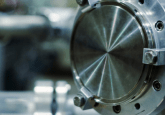The BRSA 2018 winner: where is she now?

Over the past 9 years, Bioanalysis Zone have supported and recognized outstanding early-career researchers in the field of bioanalysis. In 2018, Jing Tu (AbbVie; MA, USA) was announced the 8th winner of the award highlighting her work on systematic ligand binding assay method development and optimization strategy. In this interview we find out where Jing is now and key developments that have evolved over the last year.
Q.Since winning the award last year, how has your research focus changed? And what has been your biggest achievement?
After receiving the award, I joined the AbbVie DMPK department and have been leading the non-regulated ligand binding assay (LBA) team, supporting drug discovery and development programs in the fields of oncology, immunology and neurology. My focus has shifted from clinical biomarker bioanalysis to preclinical drug metabolism and pharmacokinetics (DMPK), immunogenicity and biomarker bioanalysis. I think the fit-for-purpose concept, generic approaches and high throughput workflow are the key to successfully supporting early drug development programs. How to efficiently and accurately select ‘the molecule’ from dozens and hundreds of candidates is always a challenge.
With the support of the LBA team, I was able to increase the overall capacity of the team by 150% and reduce the average turnaround time by 50%. In addition, I have been working together with the proteomics and LC/MS teams to develop bioanalytical strategies to support the development of new biologics modalities.
Q.How has the LBA field changed over the last year? Have there been any key developments in your research?
In the field of LBA regulation, the newly released FDA 2018 Bioanalytical Method Validation Guide and the draft ICH M10 Guide has had a major impact. In addition, there has been a growing discussion of biomarkers and immunogenicity within the last year and there is much focus on how to use ligand binding assays to support new therapeutic approaches, such as cell and gene therapy products. In the Chinese bioanalytical community, the number and quality of LBA-related topics is increasing compared to the traditional LC/MS dominated atmosphere.
My research has focussed on the use and collaboration of different technologies. My team is comparing the use of Meso Scale Discovery and Protein Simple WES in the bioanalysis of multidomain fusion proteins. The use of traditional LBA to measure the full-length drug and drug fragments would require different specific antibodies that target different domains. However, critical reagent availability is often a limiting factor in method development for high quality LBA methods. Protein Simple WES uses a western blot concept to separate deferent drug fragments by size and then detects them with the same detection antibody, which provides another way to evaluate drug PK/PD.
Q.Over the last year, can you identify one published article that has had the biggest impact on you? And why?
If I can only choose one, I must choose Direct observation of coordinated DNA movements on the nucleosome during chromatin remodelling by Anton S, Robert L Xiaowei Z et al. For the first time, the article reported the direct observation of the movement of DNA molecules. The project team developed a method called origami-rotor-based imaging and tracking (ORBIT) that directly measures remodeller-induced DNA movements, which can be observed by a customer-built total Internal Reflection Fluorescence (TIRF) microscopy.
I found this paper to be very exciting because it shows how technology and methodology innovation can make direct observation of molecular movement possible. I wonder if similar breakthroughs can also be achieved in the field of bioanalysis one day. Perhaps with the constant innovation of the imaging technique and bioanalytical methodology, we can directly see the interaction between drug molecules and host cells or tissues without measuring the concentration of any fluid samples.
Q.As part of the judging panel for the 2019 BRSA award, what have you enjoyed most about reading through the 2019 nominations?
I am honoured to be a member of the 2019 BRSA award judging panel. I am very happy to learn the wonderful works of other early-career researchers. Working with other judges and the Bioanalysis Zone Editor to carefully and fairly select the best finalists amongst of all outstanding candidates is a great journey. I have really enjoyed the entire process.
Q.What opportunities has winning the award brought you? What advice would you give to those thinking about applying for the 2020 BRSA?
Winning the award in 2018 brought me a lot of visibility in the field of bioanalysis. To my surprise, several AbbVie DMPK colleagues, from four sub-teams around the world, already knew me and my work before I joined. In addition, winning the award gave me the opportunity to participate further in the bioanalytical community. I had the opportunity to become one of the Bioanalysis Zone leaders and a 2019 BRSA judge and I was invited to publish and host a webinar on Bioanalysis Zone.
The only advice I would give to any potential candidates is just do it! Just involve your supervisor and submit the application. The nomination process is very simple and easy.




